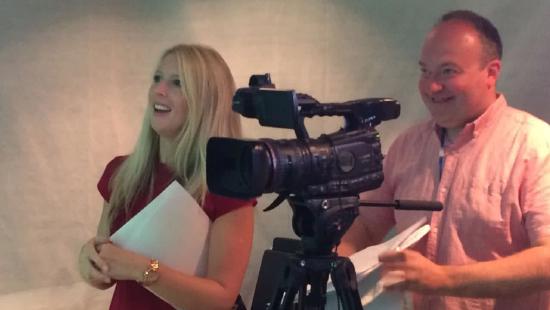Over the past few weeks, Deafax has had the pleasure of working with fellow tenant at the Clare Charity Centre where we have our Head Office, Richard Carr of Bucks TV, down in the basement studio, on a range of projects where we’ve used interpreters, translators and native users of British Sign Language (BSL). It’s been a real education for everyone, so we thought we’d share what we’ve learned.
First of all there’s the debate about interpreters and translators, and what’s the difference? Traditionally, interpreters deal with the spoken word and do their job ‘live’, while translators deal with written copy. Both will usually be expert in at least two languages. But it’s not quite the same when the output language is BSL and doesn’t have a written or spoken form!
BSL interpreters will be hearing, sometime having grown up in Deaf families, whereas many BSL translators will be Deaf. Both will be very highly qualified, though the two professions have different accreditation regimes and training paths. As individuals they are as diverse as any group of people. Which is better for your project can depend on many factors, in addition to the actual task of ‘translation’.



Here are a few things which we had to think about, and discuss with our clients:
- Subject matter: Some translators and interpreters will specialise in certain topics like art or history, and others will not accept jobs in specific environments, such as legal or health settings.
- Recognition/Reputation: Building on the previous item, individuals can build substantial reputations in particular fields, and having them involved can add credibility to your project.
- Style: Definitely one to discuss with your stakeholders – do you want ‘a performance’ as part of the signing? Should they be serious, smiling or even slightly silly?
- Brand match: To what extent should the output signing, often on video, match the brand values or your organisation or your client’s? The signers could wear uniform or even a costume if that’s closely associated with your company or charity. Formal or casual, bright and outgoing or sober and business-like, the options are many.
- Customer match: For outward-facing communication, it’s probably more likely that you’ll want the signer to be recognisable to the end customers. Are you targeting a particular age range, or you might want to reflect a wide ethnic mix of the public by using a diverse range of signers in the video.
That’s just some of the things we at Deafax have been discussing with our Signly clients, and seeking to capture in the signing videos with Richard and Bucks TV. And, of course, we’ve been using both interpreters and translators along the way.


